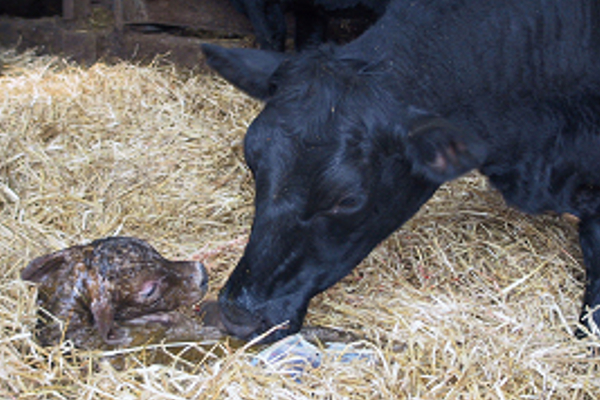Losses at Calving – should I investigate?
29 March 2023Calf loss is costly and can occur as soon as a pregnancy is established. While very early losses can be challenging to investigate as often the material will be passed unnoticed or reabsorbed, it is well worth making use of any abortion material that is available to initiate investigation. Any information gained has the potential to be used to prevent further abortions both in this calving season and in subsequent years - a financial no brainer! This also applies to stillborn calves – those that are born at term but are born dead or die within 24-hours of birth.
What are the possible causes of abortion or stillbirth?
There can be many contributing factors that lead to calf loss before or at term. A high proportion of calf loss can be attributed to bacterial or fungal infections that have occurred in the uterus. These abortions occur when the cow is exposed to a high level of the organism in the environment – often in spoiled silage or dirty water troughs. During pregnancy, the cows’ immune system can be under pressure if body condition and nutrition are not carefully managed. If the immune system is compromised, some less-common bacteria can gain entry to the uterus and cause abortion. Other circulating diseases or parasitic load could also contribute to immunosuppression.
While many losses can be attributed to infectious causes, some calf losses, particularly those closer to term can be due to prolonged calvings which do not progress. Outwardly, these calvings do not appear to be particularly protracted and are often unassisted with a dead calf being born for no apparent reason. Management factors such as cow condition, nutrition and handling around calving are often thought to be responsible however a farm specific investigation is required to prevent further losses in this way.
It is important to remember that no matter what the cause, it is often not possible to tell without your vet taking some samples to investigate. If a diagnosis is reached this can be used to signpost areas that need attention to prevent further losses.
What samples are needed to investigate?
Contact your vet to initiate an investigation. Ideally try and keep the foetus or stillborn calf AND placenta for your vet to examine – this can be done on farm or submitted to a SRUC post-mortem facility. Your vet may also need to take some blood and milk samples from the dam. The cost of an investigation can easily be justified if the information gained is used to prevent further calf loss.
Related Materials
https://www.fas.scot/publication/preparing-for-calving-and-maximising-live-calves/
https://www.fas.scot/publication/precision-solutions-to-animal-health-welfare-episode-post-mortem/
Related External Materials
Sign up to the FAS newsletter
Receive updates on news, events and publications from Scotland’s Farm Advisory Service

